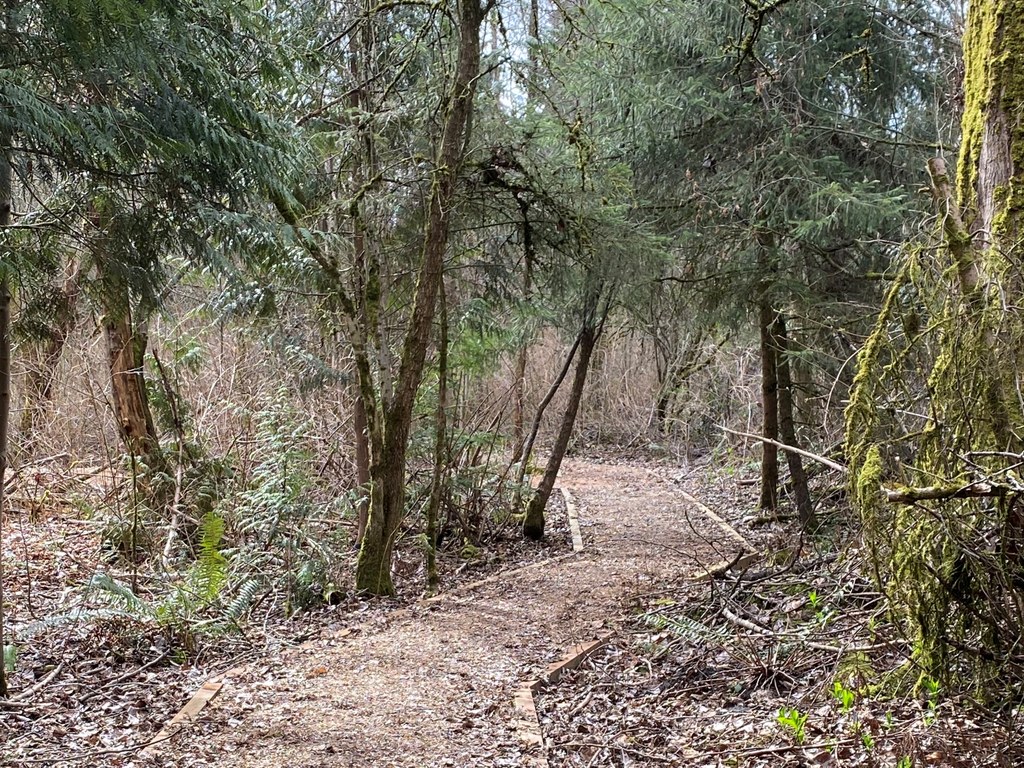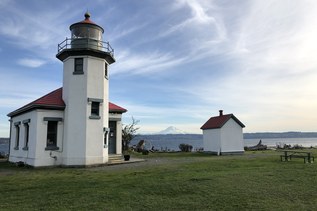Try this less than 2-mile hike, built by WTA crews, through palustrine (inland, non-tidal) wetland. It's a great outing for kids and dogs, as well as walking folks of all abilities, due to its soft surface and gently rolling hills.
The trail wends through an area where logging was once practiced; a number of artifacts have been incorporated into the trail, including an old steam donkey (steam-powered winch used to haul logs from where trees were felled to a central processing area). There is a huge old Western Red Cedar with a girth of six people extending arms around.
In the spring, the wetlands are full of Pacific Dogwood and Skunk cabbage in bloom. In autumn, the area is rich in the yellow and gold of bigleaf maples, vine maples, alder, and cottonwood. All year-round there are a variety of birds to be seen and heard – woodpeckers, flickers, chickadees, Stellar Jays, owls, etc.
The Greenbrier Trail within the Woodinville City limits is bordered by the Greenbrier residential community to the west and Woodinville-Duvall Road to the east. The parcel is designated as a native growth protection area and contains palustrine forest or emergent wetlands.
The forest wetland floor is saturated, mucky soil – trails through this area are raised turnpike, filled with mulch as well as several puncheon bridges. Trails in the upland forest are mineral soil with some gravel base. The forested sections of the trail are rich with Douglas fir, Western red cedar, and sword ferns. The shrub/scrub wetland area is covered by dense shrubbery such as vine maple, dogwood, or salmonberry, (as well as invasive holly and Japanese Knotweed).







 Trailhead
Trailhead



